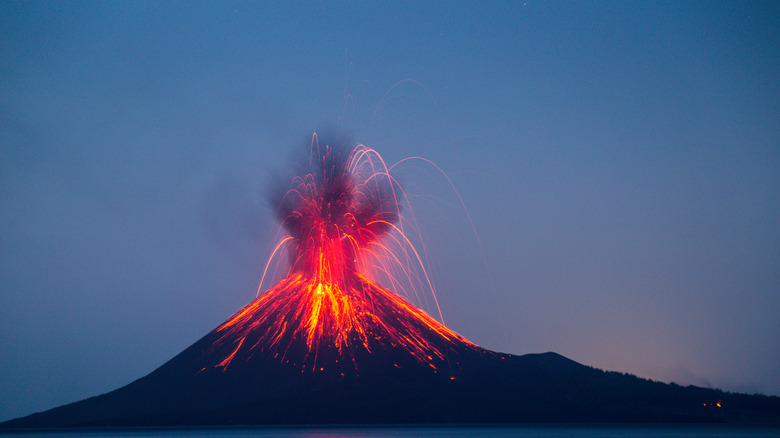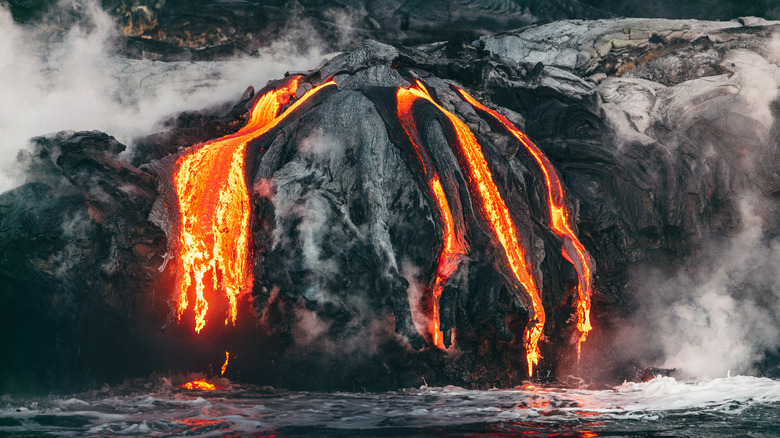Here's How Volcanos Go Extinct
Oftentimes, when we think about extinction, we think only about animals. How quickly we forget that everything around us is alive — from fluffy bunny rabbits to huge roaring lions, from the grass beneath our feet to the mountains looming overhead. This might make you look at a plate of salad differently, but it's definitely food for thought.
Like everything else that is alive, volcanos can go extinct (via National Geographic). They can also be active or sleeping, and knowing the difference is vital for everyday survival. A dormant or sleeping volcano could still erupt, causing quite the nightmare for anyone hanging around nearby. In contrast, an extinct volcano is not expected to erupt ever again. But even this is not a guarantee. From time to time, even seemingly extinct volcanos have erupted, causing mass devastation. The most famous example of this is probably Pompeii (via Universe Today).
As you're reading this, you might be thinking, "How likely is it that I would encounter any kind of volcano in my lifetime — regardless of whether it is active, asleep, or extinct?" The answer is extremely likely. USGS reports that an astonishing 80% of our planet's surface is of volcanic origin, a fact that is literally mind-blowing.
When a volcano is cut off from its source of lava for thousands of years, it goes extinct
The thing that makes volcanos so explosive is active, flowing lava. Without it, a volcano will just shrivel up and die (via Universe Today). If a volcano has been dead for tens of thousands of years, most volcanologists will declare it extinct. However, there is some nuance here, as scientists and researchers are scrambling to uncover the history of millions of Earth's volcanos, many of which are rooted in legends of eruptions that may or may not have actually happened (via Earth Magazine).
There are a variety of ways in which a volcano can become separated from the hotspot beneath its surface that is its source of lava. One of these ways is the shifting of tectonic plates. Because the Earth itself is alive, and it is not extinct or sleeping, that means it is active. As such, tectonic plates beneath the planet's surface are constantly in motion. Occasionally, this action effectively renders volcanos extinct by making their lava inaccessible for tens of thousands of years. A similar process is taking place in Hawaii, where volcanoes are becoming less active as they move in a northwest direction that takes them further away from their lava-filled hotspots (via Skyline Hawaii).

